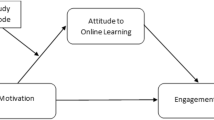Abstract
In many studiesin software engineering students are used instead of professionalsoftware developers, although the objective is to draw conclusionsvalid for professional software developers. This paper presentsa study where the difference between the two groups is evaluated.People from the two groups have individually carried out a non-trivialsoftware engineering judgement task involving the assessmentof how ten different factors affect the lead-time of softwaredevelopment projects. It is found that the differences are onlyminor, and it is concluded that software engineering studentsmay be used instead of professional software developers undercertain conditions. These conditions are identified and describedbased on generally accepted criteria for validity evaluationof empirical studies.
Similar content being viewed by others
References
Cook, T. D., and Campbell, D. T. 1979. Quasi-Experimentation—Design and Analysis Issues for Field Settings. Houghton Miffilin Company.
Fenton, N., and Pfleeger, S. L. 1996. Software Metrics—A Rigorous & Practical Approach, Second Edition. London, UK: International Thomson Computer Press.
Karlsson, J., and Ryan, K. 1997. A cost-value approach for prioritizing requirements. IEEE Software, September/October: 67-74.
Moynihan, T. 1997. How experienced project managers assess risk. IEEE Software, May/June: 35-41.
Pickard, L. M., Kitchenham, B. A., and Jones, P. W. 1998. Combining empirical results in software engineering. Information and Software Technology. 40(11): 811-821.
Porter, A., Votta, L., and Basili, V. R. 1995. Comparing detection methods for software requirements inspection: A replicated experiment. IEEE Transactions on Software Engineering, 216: 563-575.
Porter, A., Votta, L. 1998. Comparing detection methods for software requirements inspection: A replication using professional subjects. Empirical Software Engineering, 3(4): 355-380.
Reel, J. S. 1999. Critical success factors in software projects. IEEE Software, May/June: 18-23.
Robson, C. 1993. Real World Research. UK: Blackwell Publishers Ltd.
Saaty, T. 1980. The Analytic Hierarchy Process. McGraw-Hill.
Siegel, S., and Castellan, N. J. 1988. Nonparametric Statistics for the Behavioral Sciences. McGraw-Hill.
Wohlin, C., and Ahlgren, M. 1995. Soft factors and their impact on time to market. Software Quality Journal, 4: 189-205.
Wohlin, C., Runeson, P., Höst, M., Ohlsson, M. C., Regnell, B., and Wesslén, A. 2000. Experimentation in Software Engineering: An Introduction. Kluwer Academic Publishers.
Author information
Authors and Affiliations
Rights and permissions
About this article
Cite this article
Höst, M., Regnell, B. & Wohlin, C. Using Students as Subjects—A Comparative Study of Students and Professionals in Lead-Time Impact Assessment. Empirical Software Engineering 5, 201–214 (2000). https://doi.org/10.1023/A:1026586415054
Issue Date:
DOI: https://doi.org/10.1023/A:1026586415054




